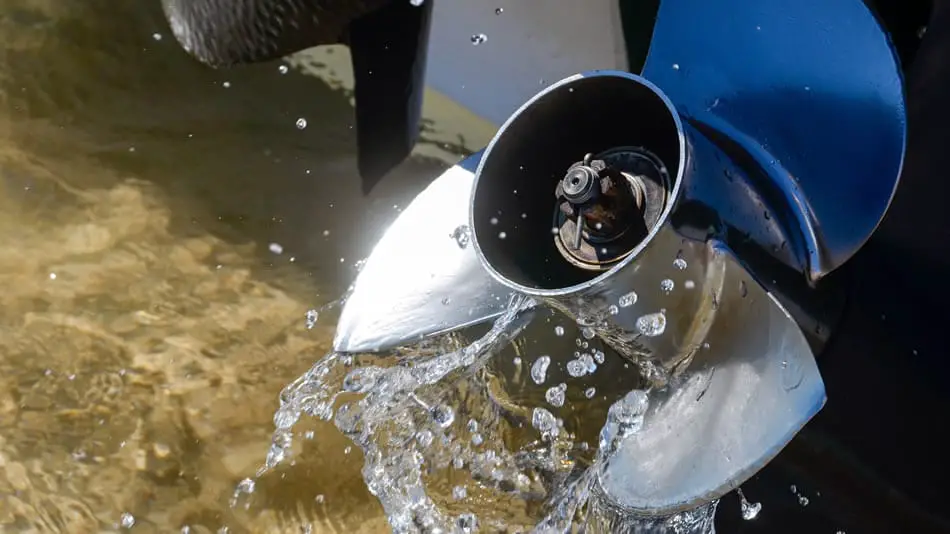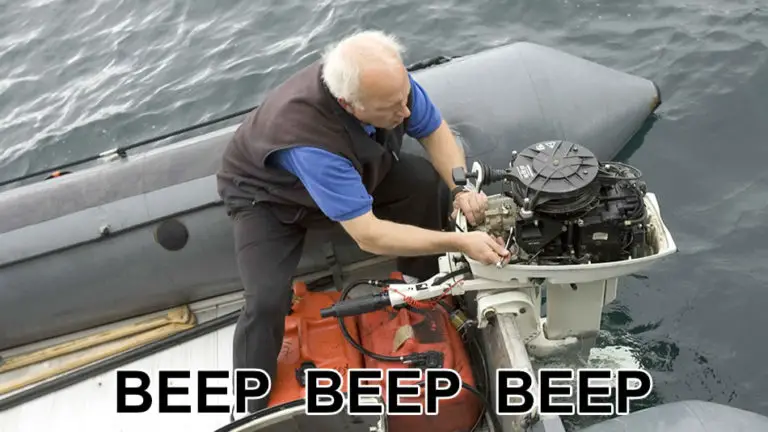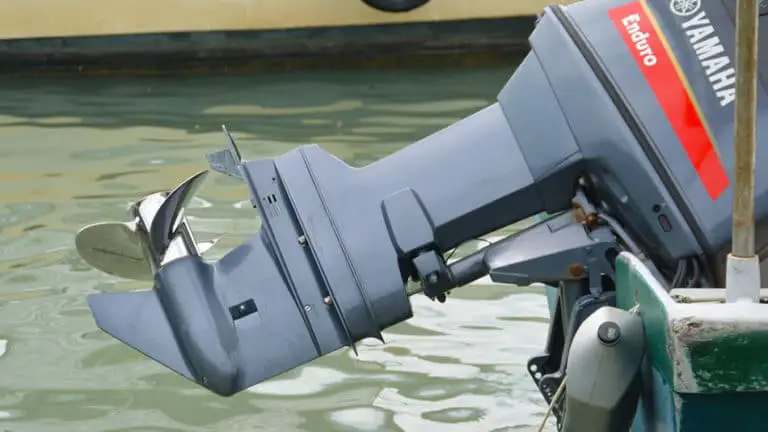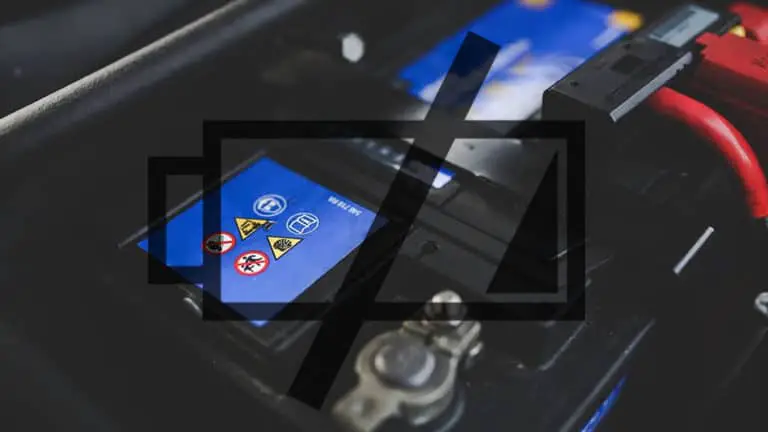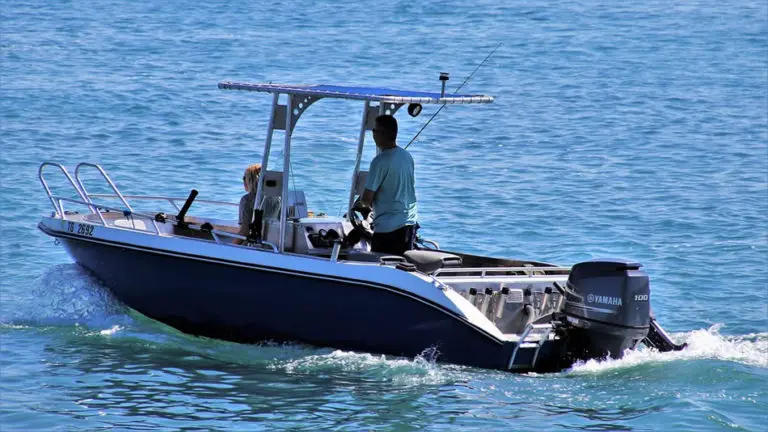Help! Boat Prop Has Play In It – Troubleshooting Tips
I was talking to my neighbor over the weekend, and he was asking me if I knew if a prop should have a little movement when its tighten. I wasn’t sure, so we took a look at my outboard engine that I have sitting in my garage, and mine didn’t have any movement.
A properly tightened prop should not move back and forth or show any signs of play in it. If it does, you should remove the prop and determine what the issue is that is causing it to move around.
After trying to find my neighbor some answers online, I was able to piece together some really helpful information that I’ll share with you below.
What It Means To Have Spun a Prop
In a nutshell, it means that your prop shaft is turning, but your propeller is not.
There is a rubber insert that goes between the propeller and the prop shaft. The rubber insert is there to help absorb any shock that is caused when you hit something like a rock, sand or mud.

To know if you have spun a prop or not, you can try marking a line on the back of the prop hub. Follow these steps below to see if your prop is slipping.
- Remove the prop. Use a rubber mallet or an ACME Clamp Prop Puller if the propeller is hard to pull off by hand.
- Using a file, china marker, permanent marker or lipstick, make a line on the inside end of the prop hub, over the inner and outer hub that is visible enough to see. (see image for example)
- Put the prop back into place and make sure it is secure.
- Run the propeller for about 2 to 3 minutes, increasing the speed.
- Shut off the engine and look for that line you drew.
- If you notice that the line no longer matches up, then your prop is slipping.
What is Prop Slip?
When a propeller spins completely around this is called a “pitch.” But when a boat is in water, the water creates drag against the boat and propeller, causing the propeller not to reach its full pitch. The distance of the turn that is lost due to the drag is what we call propeller slip or a prop slip for short.
When you can reduce the overall prop slip results, this can help improve fuel efficiency and performance.
It is essential to understand what your prop slip is if you are concerned about thrust and going faster. To help figure out what you propeller slip should be, Mercury Racing has a great calculator that you can use.
Bad Propeller Symptoms To Look For
Propellers are designed in such a way that if your propeller is bad or damaged, this will have an impact on your fuel efficiency, as well as performance. A damaged propeller will slow your boat down, affect how long an engine will last, as well how smooth the ride is on the open water.
Here are some symptoms to look for in your propeller:
Visually: Can you see any chips, nicks, dents, missing a blade, or any other sign of damage to the propeller? If so, it might be time to replace that propeller with a new one. A lot of marinas and repair shops will not attempt repairing a damaged propeller because of the sophisticated design they have.
Tangled: Often you might find that your propeller has some fishing string or seaweed wrapped around the propeller and shaft. If this happens, you need to remove the propeller and untangle the object wrapped about the shaft and propeller.
Movement: If you can grab hold of your propeller and move it back and forth, or wiggle it around a little bit, then you do have a problem that would require your immediate attention.
A few things could cause this.
- Worn key
- Crack in the hub
- Loose prop nut
Crack in hub: Remove the prop and examine the hub of the prop for visible cracks. Cracks might be hard to see, so even if you do have a crack in the hub, you might not also be able to see it. Even a small hairline crack in the hub could cause the prop not to fit tightly. This problem is not as common, but it is something to keep an eye out for.
How To Fix a Slipping Prop
Sometimes the problem is bigger then what you can do on your own. You might have to take the propeller to a boat repair shop and have them press the bad hub out of the propeller, and then press a new one in its place. Shops usually charge around $40 for this type of repair.
If the shop can not press a new hub in the propeller, you might have to look at buying a whole new propeller instead.
But often, fixing a slipping prop could be something that you can do yourself. There are a few things that you can try doing to fix the problem.
#1. Check the Keyway:
- Remove the propeller from the shaft.
- Remove the key.
- Set the prop back on the shaft (with the key missing).
- Take a file or lipstick and make a mark a line on the shaft of the bow side of the prop.
- Remove the prop and insert the key back into place.
- Slide the prop back over the shaft and set it into place so that the lines match up.
- If it doesn’t match up, remove the prop and key.
- Using a file or sandpaper, take the key and grind a little bit of it down. (not too much, just a little to start). Reset the key in its proper place, and then slide the prop back on. Repeat this step until the prop is back to lining up correctly with the mark you made.
- Tighten the prop nut, and hopefully, this fixes the problem.
#2. Cracked Hub:
- Remove the propeller and examine the prop hub.
- If you notice a crack, replace just that part.
- Set the new prop hub in place, slide the prop on, and tighten the prop nut.
#3. Loose Nut:
Sometimes you get lucky, and all that is wrong is that the prop nut has come loose. Give it a tighten and you should be good to go.
#4. Shear Pin:
If your motor uses a brass shear pin, you might have to replace this piece. The Shear pin is designed to break/shear away when the propeller hits an object in order to save the gears.
How Tight Should a Boat Prop Be?
When you go to tighten the boat prop nut, you want to make it tight, but not crazy tight. A general rule of thumb is to tighten it by hand and add a 1/4 turn extra.
You can find exactly how much torque to use by looking in your service manual for the engine you are tightening the prop nut on. It is the motor that determines how tight you make the prop nut, not the type of propeller.
If you do not have your service manual, you can go to the manufacturer who made the motor and asks them. They’ll require a model number and in some cases a serial number.
One theory that I read online talking about how tight the prop should be said, if you have the propeller tight enough it will give a little “ring” noise when you tap on the propeller with a hammer. If it makes a thud type noise, then the propeller is not tight enough.
Warning: Make sure you do not over-torque the lock nut onto the propeller shaft. Doing so will result in either stripping the nut or the threads on the shaft.

